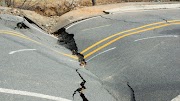Natural disasters stand as some of the most awe-inspiring and devastating events in the course of human history. These events don't only bring about physical damage; they also deeply impact communities' lives and histories. The 1934 Norway Møre og Romsdal Earthquake is one such historical event. In this article, we will explore the causes, effects, and particularly the magnitude of the 1934 Norway Møre og Romsdal Earthquake.
Causes and Geological Context
The fundamental cause of the 1934 Norway Møre og Romsdal Earthquake lies in the resultant tectonic activities due to movements in the Earth's crust. The Møre og Romsdal region of Norway is situated at a junction of the North Eurasian Plate and the Atlantic Ocean Plate. This interaction leads to stress accumulation within the Earth's crust, which can eventually be released in the form of an earthquake.
Magnitude and Impact of the Earthquake
The 1934 Norway Møre og Romsdal Earthquake struck on November 21, 1934. The magnitude of the earthquake was estimated at approximately 5.8 based on measurements available from that period. This magnitude indicates that the earthquake was a moderately intense natural event. An earthquake of magnitude 5.8 can cause damage to surrounding structures and infrastructure, but usually doesn't result in extensive destruction.
The effects of the earthquake were particularly concentrated in the Møre og Romsdal region. Local structures suffered damage, some buildings collapsed, and there were disruptions in infrastructure. Additionally, this earthquake affected the lives and daily routines of the local population. However, due to the relatively limited scale of destruction, the recovery process proceeded swiftly.
Historical Significance and Lessons
The 1934 Norway Møre og Romsdal Earthquake left a notable mark in the history of the region. Events like this underscore the need for communities to be more aware and prepared regarding earthquakes and other natural disasters. Furthermore, such calamities highlight the resilience and recovery capabilities of local communities.
Conclusion
The 1934 Norway Møre og Romsdal Earthquake stands as a significant natural disaster documented in historical and geological records. The magnitude of this earthquake serves as a reminder of the power of nature and the vulnerability of human beings to its forces. Yet, such events also motivate communities to be better prepared for disasters and to come together in times of need.


_edit_1047335234717271%20(1).jpg)
_edit_1047335234717271.jpg)


_edit_1047335234717271%20(1).jpg)
1 Comments
😱
ReplyDelete